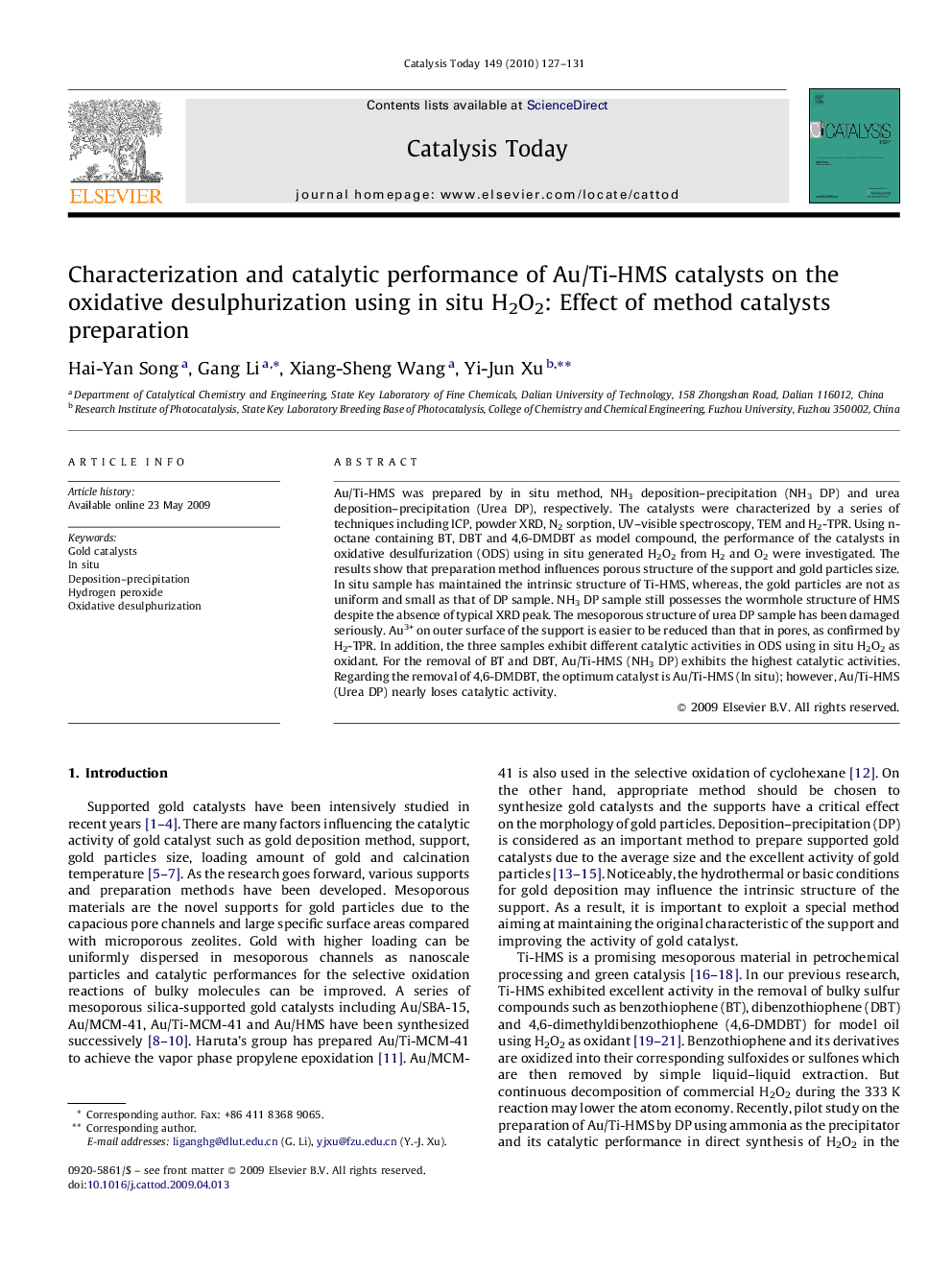| Article ID | Journal | Published Year | Pages | File Type |
|---|---|---|---|---|
| 56917 | Catalysis Today | 2010 | 5 Pages |
Au/Ti-HMS was prepared by in situ method, NH3 deposition–precipitation (NH3 DP) and urea deposition–precipitation (Urea DP), respectively. The catalysts were characterized by a series of techniques including ICP, powder XRD, N2 sorption, UV–visible spectroscopy, TEM and H2-TPR. Using n-octane containing BT, DBT and 4,6-DMDBT as model compound, the performance of the catalysts in oxidative desulfurization (ODS) using in situ generated H2O2 from H2 and O2 were investigated. The results show that preparation method influences porous structure of the support and gold particles size. In situ sample has maintained the intrinsic structure of Ti-HMS, whereas, the gold particles are not as uniform and small as that of DP sample. NH3 DP sample still possesses the wormhole structure of HMS despite the absence of typical XRD peak. The mesoporous structure of urea DP sample has been damaged seriously. Au3+ on outer surface of the support is easier to be reduced than that in pores, as confirmed by H2-TPR. In addition, the three samples exhibit different catalytic activities in ODS using in situ H2O2 as oxidant. For the removal of BT and DBT, Au/Ti-HMS (NH3 DP) exhibits the highest catalytic activities. Regarding the removal of 4,6-DMDBT, the optimum catalyst is Au/Ti-HMS (In situ); however, Au/Ti-HMS (Urea DP) nearly loses catalytic activity.
